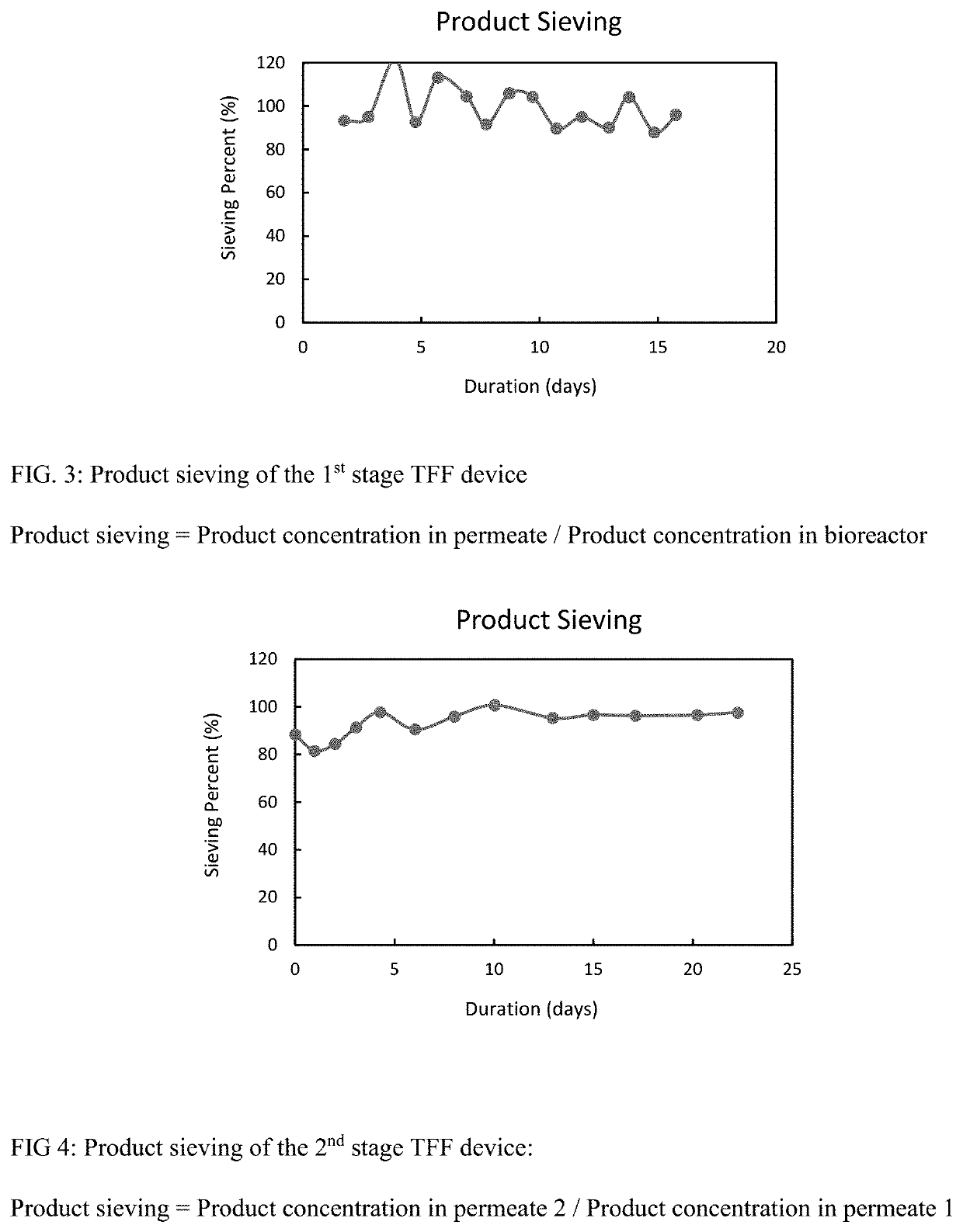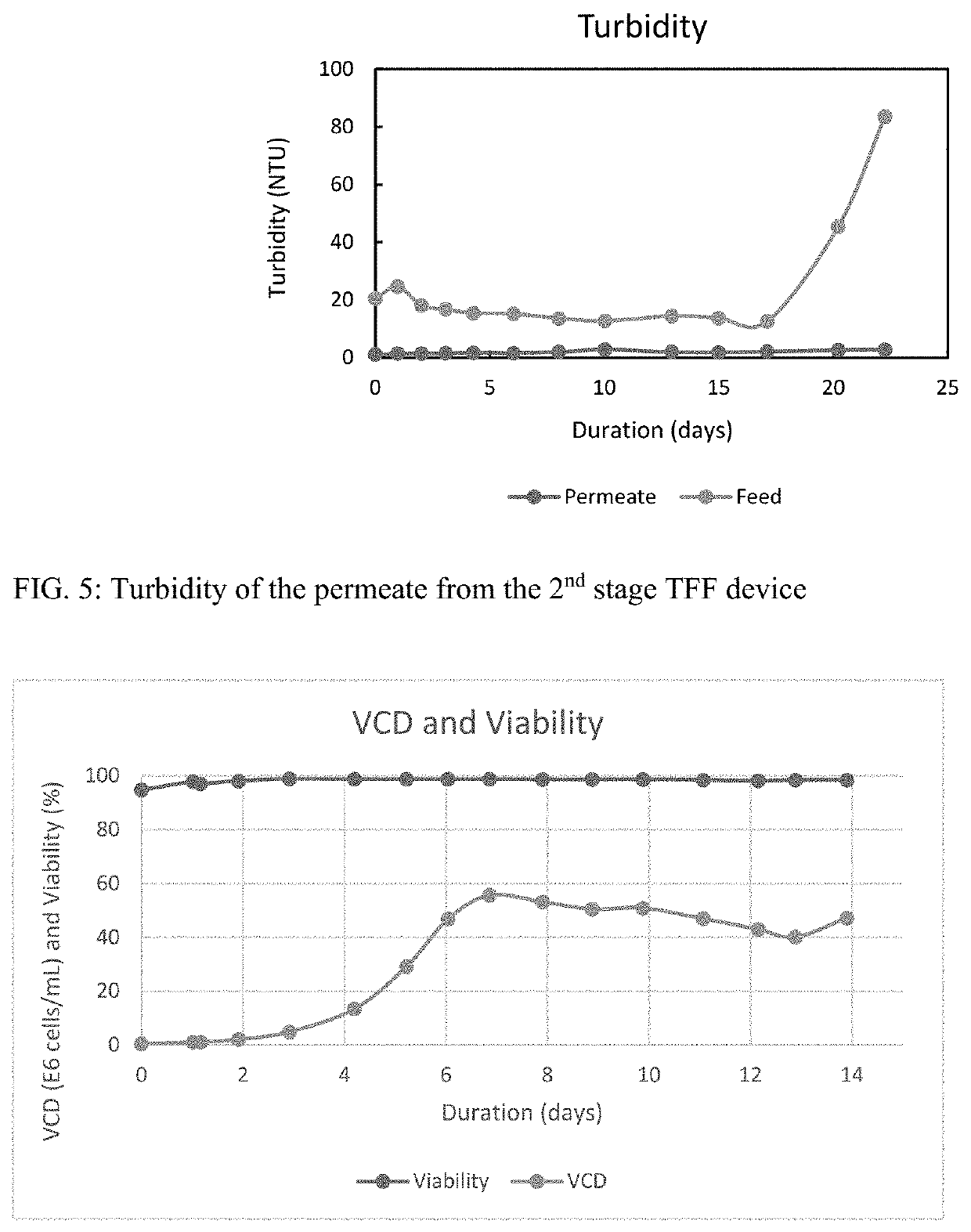Cascade Tangential Flow Filtration Systems for Perfusion of Cell Culture
- Summary
- Abstract
- Description
- Claims
- Application Information
AI Technical Summary
Benefits of technology
Problems solved by technology
Method used
Image
Examples
Embodiment Construction
[0007]A two-stage tangential flow filtration (TFF) system and method for using same in perfusion cell culture processes; substantially as shown in and / or described in connection with at least one of the figures, as set forth more completely in the claims, are disclosed. In some embodiments, a first TFF device retains viable cells within a bioreactor while continuously removing spent media and products from the bioreactor using a large pore size membrane, e.g., approximately 5-10 μm. A permeate from the first TFF device is fed to a second TFF device, wherein the second TFF device clarifies the permeate using a small pore size microfiltration membrane, e.g., <0.2 μm. In some embodiments, the first TFF device and the second TFF device operate within a continuous, and / or closed, sterilized system. In some embodiments, a cascading TFF system for cell retention and clarification in perfusion cell culture processing is disclosed. In some embodiments, a permeate from a cascade TFF system ha...
PUM
 Login to View More
Login to View More Abstract
Description
Claims
Application Information
 Login to View More
Login to View More - R&D
- Intellectual Property
- Life Sciences
- Materials
- Tech Scout
- Unparalleled Data Quality
- Higher Quality Content
- 60% Fewer Hallucinations
Browse by: Latest US Patents, China's latest patents, Technical Efficacy Thesaurus, Application Domain, Technology Topic, Popular Technical Reports.
© 2025 PatSnap. All rights reserved.Legal|Privacy policy|Modern Slavery Act Transparency Statement|Sitemap|About US| Contact US: help@patsnap.com



